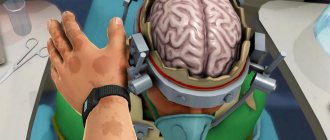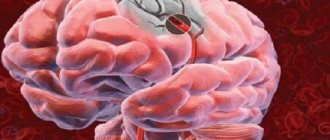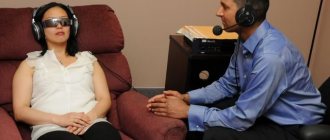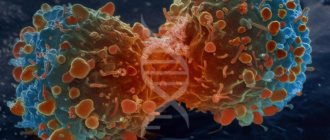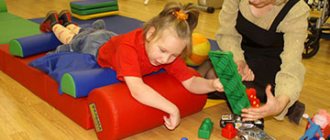Psychogenic diseases
Psychogenic diseases (psychogenies) are a class of mental disorders caused by exposure to unfavorable mental factors. This includes reactive psychoses, psychosomatic disorders, neuroses, abnormal reactions (pathocharacterological and neurotic) and psychogenic personality development that occurs under the influence of mental trauma or in a traumatic situation. It should be emphasized that in cases of psychogenic illness, the disease occurs after mental trauma to a person. It is accompanied, as a rule, by a range of negative emotions: anger, intense fear, hatred, disgust, etc. In this case, it is always possible to identify psychologically understandable relationships between the features of a psychotraumatic situation and the content of psychopathological manifestations. In addition, the course of psychogenic disorders depends on the very presence of a traumatic situation and when it is deactualized, as a rule, a weakening of symptoms occurs.
Neuroses
- mental disorders that arise as a result of disruption of particularly significant human life relationships and manifest themselves mainly as psychogenically caused emotional and somatovegetative disorders in the absence of psychotic phenomena.
In V. A. Gilyarovsky’s definition, several signs are given that characterize neuroses: the psychogenic nature of their occurrence, the patient’s personal characteristics, vegetative and somatic disorders, the desire to overcome the disease, the individual’s processing of the current situation and the resulting painful symptoms. Usually, when defining neurosis, the first three signs are assessed, although very important for diagnosing neurosis are the criterion that characterizes the attitude towards the situation of the illness that has arisen and the struggle to overcome it.
Within the framework of psychodynamic theory, the definition of neuroses is based on the established relationship between the symptom, the triggering situation and the nature of early childhood traumatization.
Neurasthenia is the most common form of neurotic disorder. It is characterized by increased excitability, irritability, fatigue and rapid exhaustion. Neurasthenia occurs against a background of nervous exhaustion caused by overwork. The cause of this overwork is intrapersonal conflict. The essence of this conflict lies in the discrepancy between a person’s neuropsychic capabilities and the requirements that he places on himself in the process of performing an activity. The state of fatigue acts in this case as a signal to stop it. However, the demands that a person places on himself force him through an effort of will to overcome this fatigue and continue, for example, to complete a large amount of work in a short time. All this is often combined with a reduction in sleep time, and as a result the person finds himself on the verge of complete nervous exhaustion. As a result, symptoms appear that are considered as a core disorder in neurasthenia - “irritable weakness” (as defined by I. P. Pavlov).
The patient reacts violently to the most insignificant reason, which was uncharacteristic for him before; emotional reactions are short-lived, as exhaustion quickly sets in. Often all this is accompanied by tears and sobs against the background of autonomic reactions (tachycardia, sweating, cold extremities), which pass quite quickly. As a rule, sleep is disturbed, becoming restless and intermittent.
A neurasthenic person feels worst in the morning, but may improve in the evening. However, the feeling of exhaustion and tiredness accompanies him almost all the time. Intellectual activity becomes difficult, absent-mindedness appears, and ability to work decreases sharply. Sometimes the patient has short-term and frightening sensations that his mental activity has stopped - “thinking has stopped.” Headaches appear that are of a tightening, pressing nature (“neurasthenic helmet”). Sensitivity to external stimuli increases, the patient reacts to bright light and noise with irritation and increased headaches. Both men and women experience sexual dysfunction. Appetite decreases or disappears.
Mild neurasthenic manifestations can be observed in any person due to overwork. When treating neurasthenia, psychotherapy is indicated, aimed at identifying the external and intrapersonal causes that caused this neurosis.
Hysterical neurosis (hysteria) is a disease that the famous French psychiatrist J. M. Charcot called the “great malingerer,” since its symptoms can resemble manifestations of a wide variety of diseases. He also identified the main symptoms of this form of neurosis, which in terms of frequency ranks second among neuroses after neurasthenia.
Hysterical neurosis most often occurs at a young age, its development is due to the presence of a certain “hysterical” personality set of traits. First of all, these are suggestibility and self-suggestibility, personal immaturity (infantilism), a tendency to demonstrative expression of emotions, egocentrism, emotional instability, impressionability and “thirst for recognition.”
Neurosis is a mental disorder that arises as a result of a violation of particularly significant life relationships of a person and manifests itself mainly as psychogenically caused emotional and somatovegetative disorders in the absence of psychotic phenomena.
E. Kraepelin believed that with hysteria, emotions spread to all areas of mental and somatic functions and transform them into symptoms of illness, which correspond to distorted and exaggerated forms of mental experiences. He also believed that in every person, with very strong excitement, the voice can disappear, the legs will give way, etc. In a hysterical person, as a result of mental lability, these disorders arise very easily and just as easily become fixed.
Manifestations of hysterical neurosis are varied: from paralysis and paresis to loss of the ability to speak. The sensations that patients experience and describe may be similar to organic disorders, which makes timely diagnosis difficult.
However, the previously typical paralysis and paresis, astasia-abasia are now rarely observed. Psychiatrists talk about the “intellectualization” of hysteria. Instead of paralysis, patients complain of weakness in the arms and legs, usually arising from anxiety. They note that the legs become weak, they give way, one leg suddenly weakens, or heaviness and swaying appear when walking. These symptoms are usually demonstrative: when the patient is no longer observed, they become less pronounced. Mutism (inability to speak) is also less common nowadays; instead, stuttering, hesitations in speech, difficulties in pronouncing certain words, etc. are more often observed.
With hysterical neurosis, patients, on the one hand, always emphasize the exceptionality of their suffering, talk about “terrible,” “unbearable” pain, and in every possible way emphasize the unusual, previously unknown nature of the symptoms. Emotional disorders are characterized by lability, mood changes quickly, and violent affective reactions often occur with tears and sobbing.
The course of hysterical neurosis can be wavy. Under unfavorable circumstances, hysterical neurotic symptoms intensify, and gradually affective disorders begin to come to the fore. In intellectual activity, features of emotional logic, an egocentric assessment of oneself and one’s condition appear, in behavior - elements of demonstrativeness, theatricality with the desire to attract attention to oneself at any cost. Hysterical neurosis must be treated by a psychotherapist, especially paying attention to deontological aspects.
Obsessive-compulsive neurosis (psychasthenia, or obsessional neurosis) manifests itself in the form of obsessive fears (phobias), ideas, memories, doubts and obsessive actions. This neurosis, compared to hysteria and neurasthenia, is much less common and, as a rule, occurs in people of a thinking type with an anxious and suspicious character.
The disease, as with other forms of neuroses, begins after exposure to a psychotraumatic factor, which, after personal “working through,” can be difficult to determine during psychotherapeutic treatment. The symptoms of this neurosis consist of obsessive fears (phobias), intrusive thoughts (obsessions) and compulsive actions (compulsive disorders). What these symptoms have in common is their constancy and recurrence, as well as the subjective impossibility of getting rid of them if the patient is critical of them. Phobias in obsessive-compulsive neurosis are varied, and their combination with obsessive actions makes the condition of such patients very difficult. Psychotherapy is also used in treatment.
Under reactive psychosis
understand a mental disorder that arises under the influence of mental trauma and manifests itself entirely or predominantly as an inadequate reflection of the real world with behavioral disturbances, changes in various aspects of mental activity with the occurrence of phenomena not characteristic of the normal psyche (delusions, hallucinations, etc.).
All reactive psychoses are characterized by the presence of productive psychopathological symptoms, an affectively-narrowed state of consciousness, as a result of which the ability to adequately assess the situation and one’s condition is lost.
Reactive psychoses can be divided into three groups, depending on the nature of the mental trauma and the clinical picture:
1) affective-shock reactions, which usually occur during a global threat to the lives of large populations of people (earthquakes, floods, disasters, etc.);
2) hysterical reactive psychoses, which arise, as a rule, in situations that threaten personal freedom;
3) psychogenic psychotic disorders (paranoid, depression), caused by subjectively significant mental trauma, i.e., mental trauma that is significant for a certain person.
· Reactive psychosis is a mental disorder that occurs under the influence of mental trauma and manifests itself entirely or predominantly as an inadequate reflection of the real world with behavioral disturbances, changes in various aspects of mental activity with the occurrence of phenomena not characteristic of the normal psyche (delusions, hallucinations, etc.).
Treatment
There are many methods and theories for treating neuroses. In the treatment of neuroses, psychotherapy and drug treatment with antidepressants and tranquilizers are used.
The main method of treating neuroses and neurotic reactions is psychotherapy. At the moment, there are many areas and methods of psychotherapeutic assistance. They are divided into pathogenetic (affecting the causes of neurosis and the process of its retention in the individual) and symptomatic or auxiliary, which work effectively only in conjunction with pathogenetic methods, and in themselves have only a temporary effect that alleviates symptoms.
- Pathogenetic ones include psychodynamic, existential, interpersonal, cognitive, systemic, integrative, and gestalt therapy.
- Symptomatic areas include behavioral, hypnotherapy (hypnosis), body-oriented, exposure therapy, breathing exercises techniques, art therapy, music therapy, etc.
Neurosis is a reversible human condition and responds well to psychotherapeutic treatment. Drug therapy serves only as a catalyst for the psychotherapeutic process and in no case can be considered as the main form of therapy for neuroses. Occasionally there are cases of independent recovery from neurosis as a result of conflict resolution due to the active personal growth of a person, loss of relevance of the conflict situation, return to the original way of life, etc.
For obsessive-compulsive disorder, cognitive behavioral therapy (CBT) and SSRI antidepressants or clomipramine are recommended as the first line of treatment. In addition to cognitive behavioral therapy, psychodynamic therapy or psychoanalysis is used, but their effectiveness, unlike the effectiveness of CBT, has not been sufficiently proven. CBT is the only psychotherapy that has been proven to be effective in controlled trials for obsessive-compulsive disorder[5].
Cognitive therapy for obsessive-compulsive disorder uses adaptive training, a technique in which the therapist tries to repeatedly induce intrusive thoughts in the client over and over again, with the expectation that as a result, such thoughts will lose their threatening meaning and this will cause a decrease in anxiety. Covert response prevention techniques are also used: therapists teach patients to resist or distract themselves from performing compulsive actions that may arise during adaptive learning. According to cognitive theorists, the disorder stems from the normal human tendency to have unwanted, unpleasant thoughts: some people find unwanted thoughts so disgusting and so stressful that they try to eliminate or avoid them. These efforts lead to obsessive actions that temporarily relieve discomfort and, as a result, are repeated over and over again, and attempts to get rid of obsessive thoughts lead to increased anxiety associated with them[6].
CBT is also used for other neuroses. Thus, in generalized anxiety disorder, two cognitive approaches are usually used. Following one of them, based on the theories of Ellis and Beck, psychotherapists help people change the maladaptive beliefs that allegedly underlie their disorders. Following another, they teach people to control themselves in a situation of stress. For phobias, behavioral therapy advocates use exposure therapy, in which people with fears are exposed to objects or situations that frighten them: for example, people with agoraphobia are taught to gradually move further and further away from home and into public places. During panic attacks, cognitive therapists try to correct people's misinterpretations of their bodily sensations - in particular, Beck explained to his patients that the physical sensations they were experiencing were not harmful, taught them about the nature of panic attacks, the actual causes of physiological sensations, and the tendency of patients to misinterpret what they feel[6].
Psychoanalysis is also used for neuroses. According to most psychoanalytic schools, it is necessary for the patient to realize his contradictions and build a more accurate picture of his personality. The main task of psychotherapy is to help the patient himself understand all the relationships, the totality of which determined the development of neurosis. The result of psychotherapy is the patient’s understanding of the real relationships between his life experience, the system of his relationships with people around him formed in this experience, the situation with which they came into conflict, and the manifestations of the disease. It is very important to attract the patient’s attention not only to his subjective experiences and assessments, but also to the external conditions of his social environment, to its characteristics [7].
Karen Horney believed that awareness of one’s contradictions was absolutely not enough; it was necessary to create psychotherapeutic conditions for personality change that would allow her to move away from neurotic ways of protecting herself from the world.
Psychoanalysis is often criticized[8][9][10][11][12]. In 1994, Klaus Grawe and a group of scientists published a meta-analysis of 897 of the most significant empirical studies examining the effectiveness of psychoanalysis and similar psychotherapeutic techniques. Grave came to the conclusion that there are no positive indications for long-term use (1017 sessions over 6 years or more) of psychoanalysis, with long-term use of psychoanalysis the risk of iatrogenic effects significantly increases, and short-term use (57 sessions per year) of psychoanalysis is ineffective for patients with fears and phobias and with psychosomatic disorders. Grave also concluded that behavioral therapy was twice as effective as psychoanalytic therapy[13][14].
In the article “Is psychoanalysis harmful?” American psychologist Albert Ellis gave his assessment of the possible harm from the use of psychoanalysis. In particular, he argued that psychoanalysis as a whole is built on erroneous premises, it takes patients away from the need to work on themselves, gives them an excuse for inaction; that due to the ineffectiveness of psychoanalysis (wasted money and time), many patients in the United States have lost confidence in psychotherapy in general[10]. Ph.D. and skeptic R. T. Carroll, in his book The Skeptic's Dictionary, criticized the psychoanalytic concept of the unconscious, which stores memories of childhood trauma, as contrary to modern ideas about the workings of implicit memory.[15]
Psychoanalytic therapy is in many respects based on a search for something that probably does not exist (repressed childhood memories), an assumption that is probably wrong (that childhood experiences are the cause of the patients' problems), and a therapeutic theory that has almost no chance of being true. (that bringing repressed memories into consciousness is an essential part of the course of treatment).
— Carroll R. T.
Psychoanalysis / Trans. A. Aldaeva and E. Volkova
Patients suffering from borderline disorders are often particularly susceptible to the side effects of psychotropic medications[16][17][18]. Some psychopharmacological drugs are characterized by similarity of side effects with neurotic manifestations and, as a consequence, the possibility of increasing the latter during therapy[19].
In the treatment of neurosis, hypnosis and autogenic training also occupy a very important place [20].
If neurosis is caused by seasonal depression, then walks on sunny days or light therapy are also used for its treatment and prevention[21].
What are the factors in the development of neuroses?
In addition to the main cause of neuroses, it is also important to understand additional factors in the development of this disease. There are three main groups of risk factors for neuroses - biological, social and psychological.
Biological causes of neuroses
- Genetic predisposition : if at least one parent has psychological disorders, the probability of neurosis reaches 60%, in both parents - 90%.
- Gender specificity : women are susceptible to mild mental disorders, but they occur more frequently; men are less prone to neuroses, but their disease is much more complicated.
- Age : the highest risk of neuroses is in adolescents and people aged 40-45 years.
- Body type : neuroses are more often observed in thin people.
Social
- Financial difficulties.
- Occupational risk: the reasons for the development of neuroses often lie in work (frequent emotional overload, increased responsibility, prolonged stressful situations). Lawyers, bankers, drivers, and law enforcement officers are most susceptible to neuroses.
- Prolonged family conflicts.



